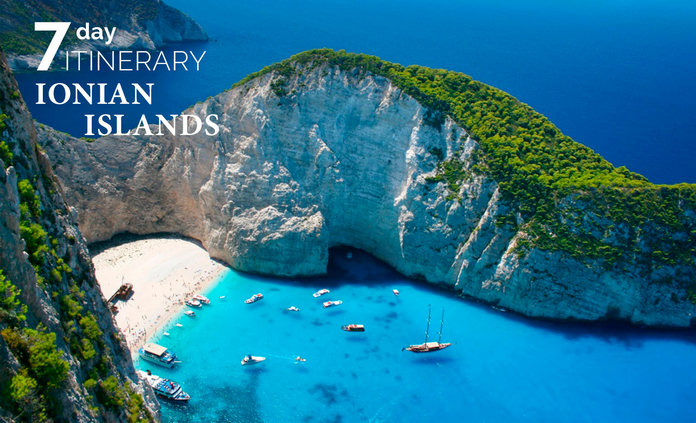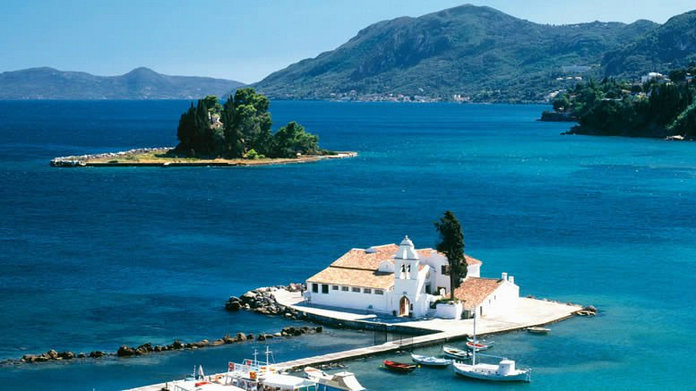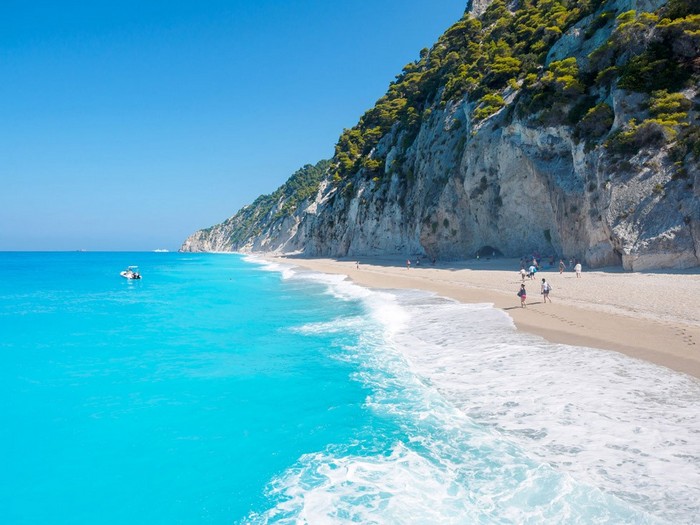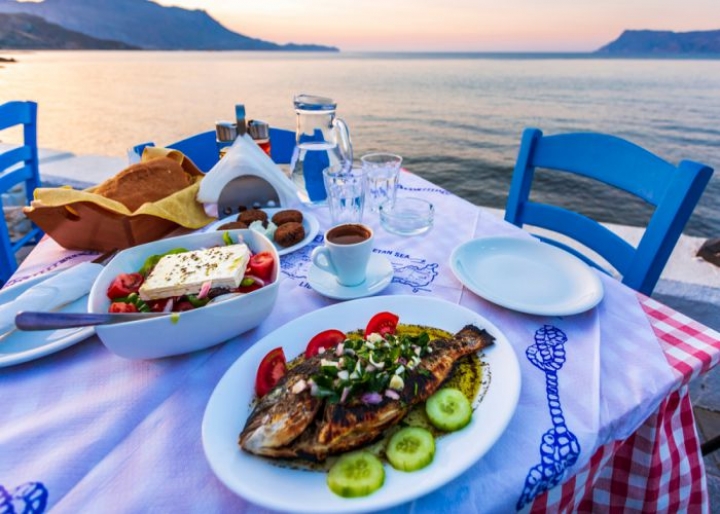The Ionian Islands are also known as the Eptanisa ( Seven islands) or the Islands of the Ionian sea. They lie parallel with the west coast of Greece forming a group of twelve islands, seven of which are larger and more densely populated.

The total area covered by the group is 2300 square kilometers. Most of the islands have an excellent tourist infrastructure, beautiful countryside, many sites of archaeological and artistic interest, easy access, and good communications. They also offer opportunities for entertainment and sport.
Their geographical profile closely resembles that of the Greek mainland opposite. Wooded mountains, small fertile plains, valleys with lush vegetation, abundant water, attractively shaped bays, mild climate, and long hours of sunshine are features found on most of them. Kythira and Antikythera which lie removed from the rest of the islands south of the Peloponnese have different geographical and cultural features.
The Ionian islands were inhabited as early as the paleolithic period and flourished during Mycenean times when, as Homer related in Odyssey, his hero Odyssey, lived and was active later between the 8th and 7th century BC.

The colony of Kerkyra was founded by Corinth. The islands were caught up in the Peloponnesian war between the Athenians and the Spartans.
The Venetian period was very protracted in the Ionian islands (1204-1797).
The islands flourished during it and formed a distinctive culture with many western, Latin elements interwoven with local traditions and culture. The Turkish presence in the Ionian islands was brief. In early modern times, they were occupied by the French (1797-1815), the Russians, and the British (1815-1864). They were incorporated in the Greek state in 1864 but during the Second World War were occupied first by the Italians followed by the Germans until their liberation in 1945.
Zakynthos, Ithaca, Corfu, Kefalonia, Lefkada, Paxi, and Kythira are the biggest of the Ionian islands and most popular ones.
All these islands attract lots of visitors every summer thanks to their mild climate, culture, and beautiful beaches.
Nature:
Ionian islands have a lot to offer when it comes to nature. Of all Greek islands, this archipelago has the lushest vegetation. Due to tectonic activity over the centuries, the islands formed some really dramatic landscapes. Egremni and Porto Katsiki beaches in Lefkada became the landmarks of these islands as well as Navagio beach for Zakynthos and Myrtos beach for Kefalonia.
Activities:
The Ionian islands and their vicinity between each other make them perfect for island hopping. These islands are also home to a protected species of loggerhead sea turtle (Caretta caretta). You can try all water sports like scuba diving, kitesurfing, and windsurfing. The ideal place for this is on Lefkada island. You can also go hiking on Ithaca island or visit Melissani or Drogarati caves in Kefalonia and Neraida waterfalls in Kythira.
Sights: History and Culture
Corfu: Corfu is the main and most popular of all the Ionian islands. We suggest you pick this island to start exploring all the others. While you are there, you should definitely visit the Old Town (UNESCO World Heritage Site), The Old Citadel, The New Fort. Take a walk to Spianada square and have a coffee at Liston restaurant. Worth the visit is also Agios Spyridonas church, a church dedicated to the patron saint of the island.
Another must-see place is Achilleon palace and Paleokastritsa bay.
Paxi: This small picturesque island can be visited during a one-day trip from Corfu. When there, take a chance to visit a Venetian Agios Nikolaos Fortress.
Lefkada island: When you get tired of all the amazing beaches that Lefkada is famous for, take a trip to Santa Maura Venetian Castle and the Archaeological Museum.
Kefalonia: On the biggest of this group of islands you can visit Saint George’s Castle, Assos Fortress, and Agioi Theodori Lighthouse.
Zakynthos: Visit Agios Dionysios Church, Venetian Fort and Milenio Maritime Museum.
Kythira: The most interesting sites on this island are the 13-century Venetian castle, Archaeological Museum, and Myrtidiotissa Monastery.
Cuisine:
Olive oil, thyme honey, herbs, and citrus fruits like kumquat are local products you will find on these islands.
In Kythira don’t forget to try olive oil rusks. In Lefkada try salami and ladotyri in Zakynthos. It’s a type of cheese that matures in olive oil.
Pastitsada is also one of the local dishes. It’s made of rooster meat cooked in tomato and herb sauce.
You will find bourdeto in Corfu. It’s a local delicacy made of fish prepared with tomato sauce and local herbs. You can also find sofrito in Corfu. It’s made of beef cooked with tomato, quince, and melassa sauce as well as bean soup cooked with salami.
Corfu is also famous for its koumkouat liquor and everything made of this citrus fruit like desserts, sweets, cookies, candies, etc. Tsitsibara is a nonalcoholic drink made of ginger and lemon.
Kefalonia is famous for its meat pies and Zakynthos for its stifado (a sort of rabbit stew).
The islands are also famous for their local wines, white PDO robola from Kefalonia and red vertzami from Lefkada



